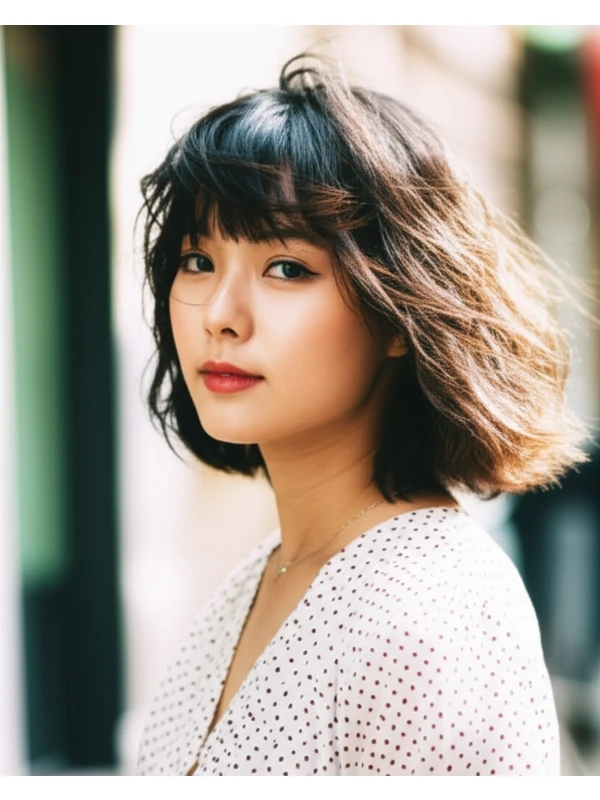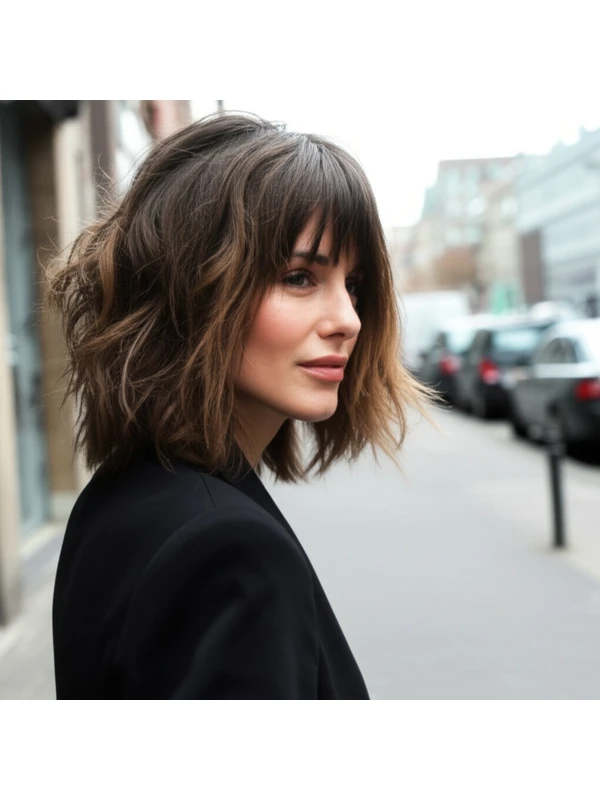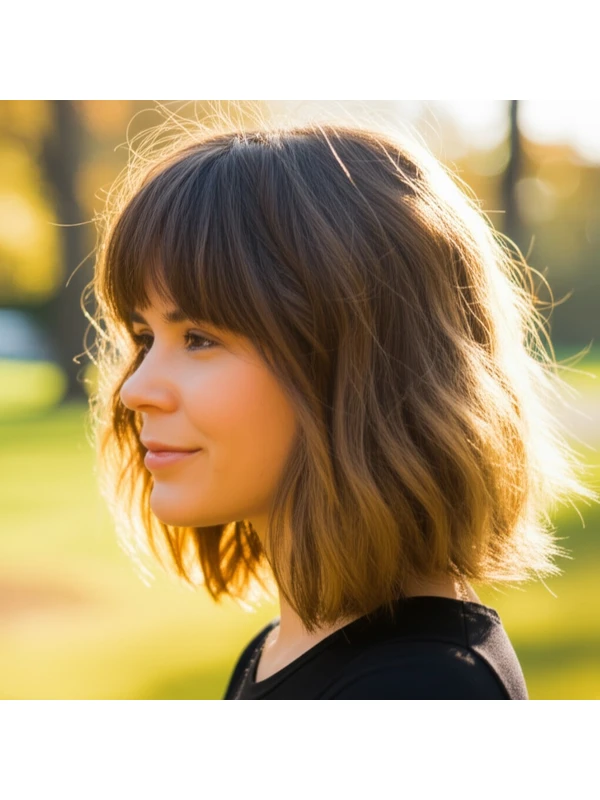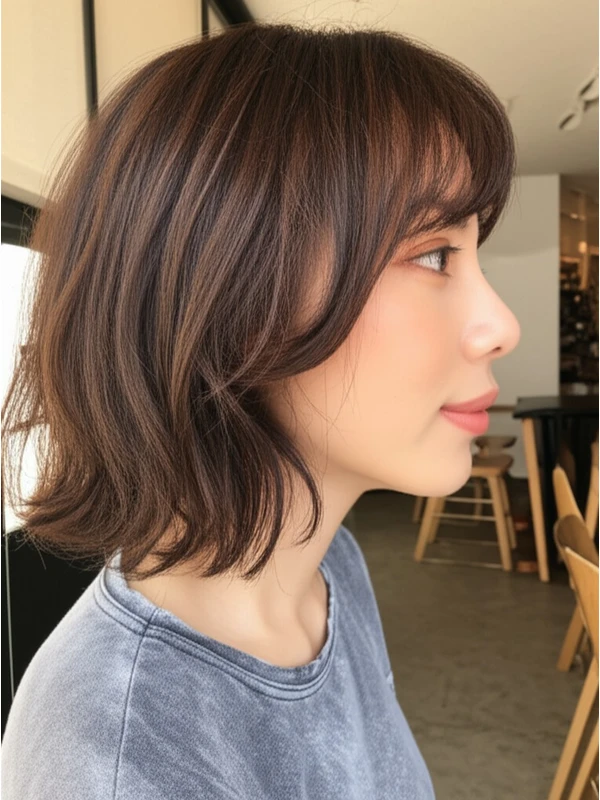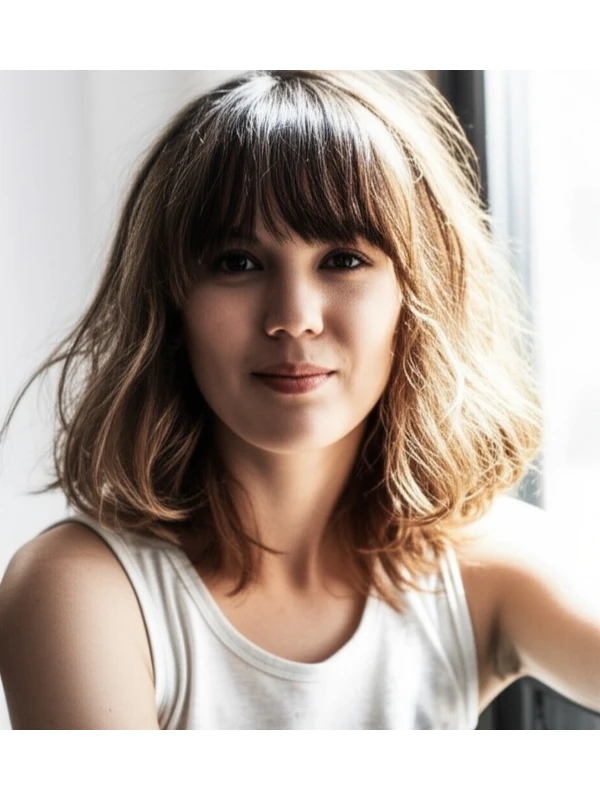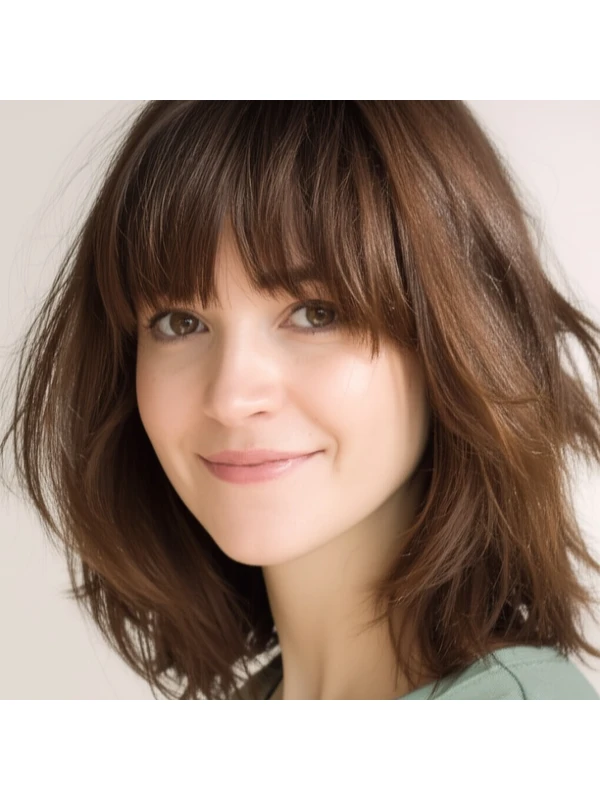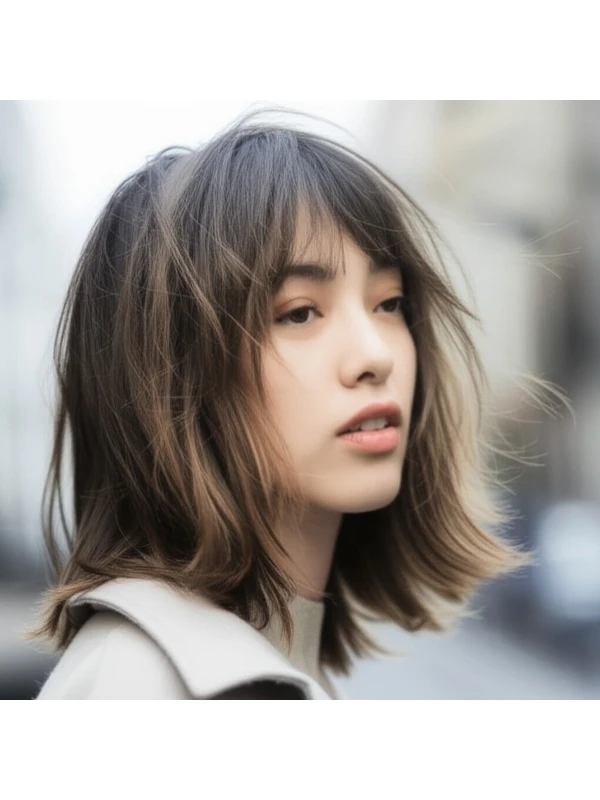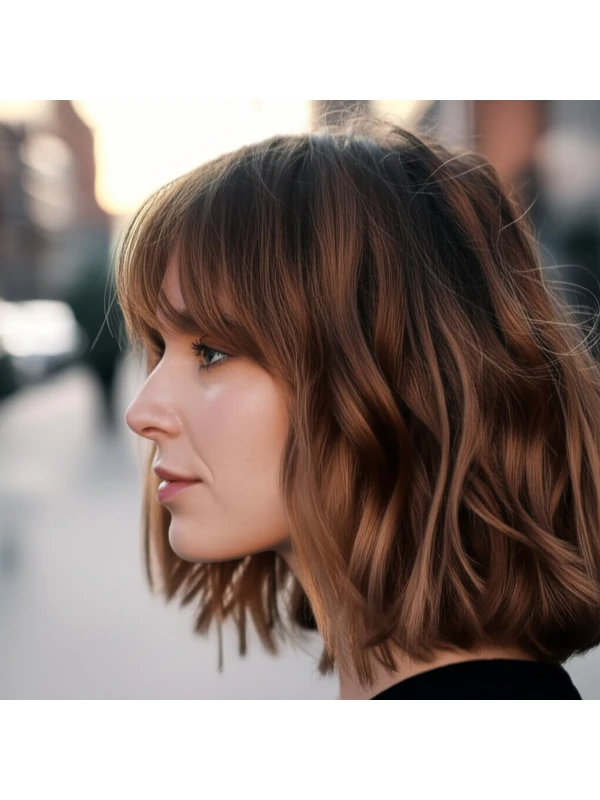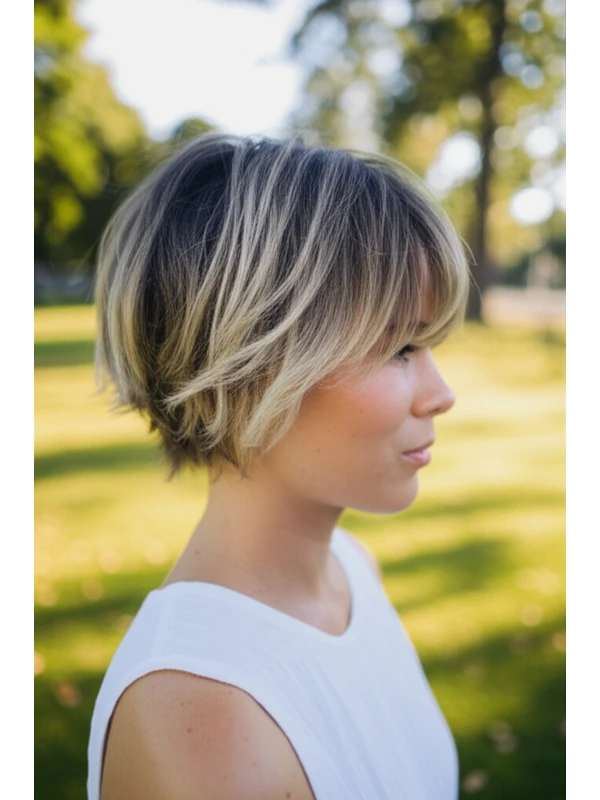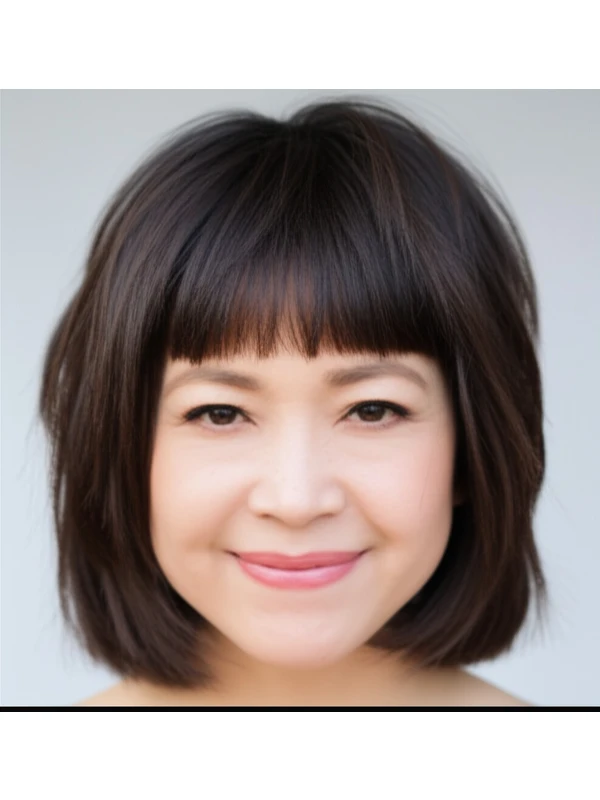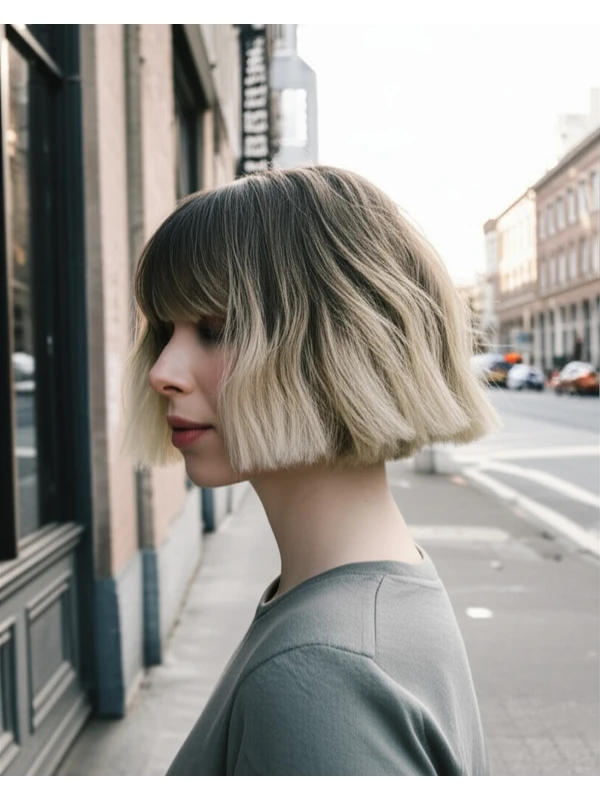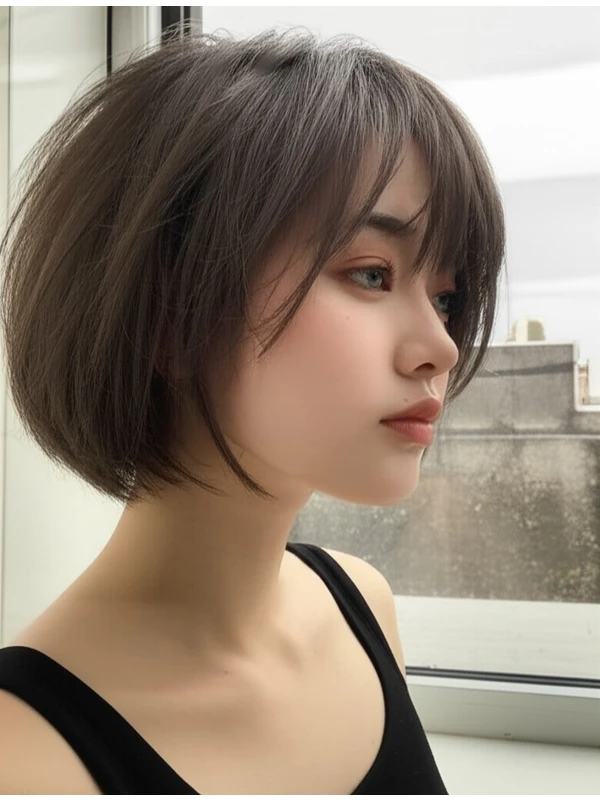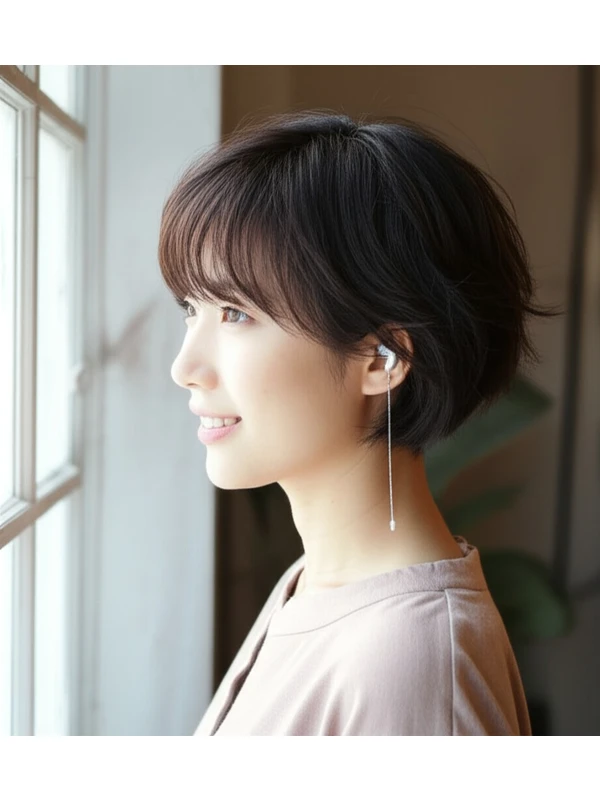#Wispy Bangs: A Guide to Effortless Style
Wispy bangs are having a moment – and for good reason! They’re soft, flattering, and surprisingly versatile. But before you book that salon appointment, let's dive into everything you need to know about this popular style. This guide will cover everything from face shape compatibility to styling tips and maintenance.
#1) Background & Definition: What Are Wispy Bangs?
Wispy bangs are a soft, diffused fringe characterized by their airy texture and blended edges. They’re not blunt or heavy; instead, they create a delicate frame for the face. Think of them as subtle, feathery pieces that softly sweep across your forehead.
- Cut Geometry: The cut is layered and point-cut (tiny snips) to remove bulk and create those wispy ends. They're typically shorter in the center and gradually lengthen towards the sides, blending seamlessly into the rest of your hair.
- Key Features: Softness, lightness, blended edges, face-framing effect.
- Typical Length Ranges: Generally between brow level and just below the cheekbones (around 1-3 inches). The shorter length emphasizes eyes; a longer length offers more coverage.
- Alternative Names: Feathered bangs, soft bangs, airy fringe, textured bangs.
#2) Face Shape Fit: Finding Your Wispy Bang Angle
Wispy bangs can be incredibly flattering on many face shapes! It's all about adjusting the length and density to complement your features.
- Oval Face: Lucky you! Almost any wispy bang style will work beautifully. Experiment with different lengths – shorter for a bolder look, longer for a softer feel.
- Round Face: Wispy bangs can help elongate a round face. Keep them slightly longer (below the cheekbones) and avoid overly blunt cuts that could widen your face further. A side-swept variation is particularly flattering.
- Square Face: Soften those angles! Wispy bangs, especially with a gentle curve or side part, will soften the sharpness of a square jawline. Avoid straight-across, heavy fringes.
- Heart Face: Wispy bangs draw attention to your eyes and balance out a wider forehead. A slightly longer length that blends into layers is ideal.
- Diamond Face: Wispy bangs can help soften the angles of a diamond face shape. Side-swept styles are generally very flattering, as they add softness around the cheekbones.
- Oblong (Long) Face: Wispy bangs can shorten the appearance of a long face. A fringe that hits at or just below the eyebrows is usually best. Avoid super-long, straight-across fringes which will only emphasize length.
#3) Body Proportions & Height Guidance: Balancing Your Silhouette
Your height and body proportions play a role in how wispy bangs look overall. The key is to balance your features!
- Petite: Shorter, more voluminous wispy bangs can add visual interest and prevent you from looking overwhelmed by long hair.
- Average: Most lengths work well; consider your face shape first.
- Tall: Longer, softer wispy bangs that blend seamlessly into layers create a harmonious look. Avoid very short, choppy styles which could appear disproportionate.
- Narrow Shoulders: Adding volume at the forehead with slightly thicker (but still wispy) bangs can visually broaden your shoulders.
- Broad Shoulders: Keep the bangs lighter and more delicate to avoid adding extra visual width to your upper body.
- Short Neck: Shorter, lifted bangs help elongate the neck. Avoid long, heavy fringes that could emphasize a shorter neck.
- Long Neck: Longer, face-framing wispy bangs can soften the length of your neck and create balance.
#4) Works Best With Hair Types & Densities: Finding Your Match
Wispy bangs are adaptable but thrive on certain hair types and densities. Understanding how your hair behaves is crucial.
- Straight Hair: Easy to style! Wispy bangs fall naturally, making them a great choice for those with straight locks. Use a light styling serum or mousse for added definition.
- Wavy Hair: Requires more attention to drying techniques (explained in Styling Variations). Embrace the natural wave – don’t fight it!
- Curly/Coily Hair: Shrinkage is key. Bangs will appear much shorter when dry than they do wet. Start longer and have your stylist account for shrinkage. Layering is essential to prevent a triangular shape.
- Fine Hair: Wispy bangs can add the illusion of thickness! Use volumizing products at the roots.
- Medium Hair: A good match – wispy bangs will blend well with most medium-density hair types.
- Thick Hair: Wispy bangs work, but ensure they're properly thinned to avoid a heavy look.
Shrinkage Tip (Curly/Coily): What looks like 4 inches wet might be only 2 inches dry! Consult with your stylist and factor in shrinkage when determining the initial length.
#5) Styling Variations: From Sleek to Textured
The beauty of wispy bangs lies in their versatility. Here's how to customize them.
- Sleek vs. Textured: Sleek requires a flat iron and smoothing serum; textured involves air-drying or using a diffuser for natural movement.
- Middle vs. Side Part: A middle part offers symmetry, while a side part adds softness and asymmetry.
- Fringe Variations: Consider micro-bangs (very short), curtain bangs that blend into the wisps, or slightly angled styles.
- Occasion Styling:
- Casual: Air-dried with minimal product.
- Office: Sleeked down and styled neatly.
- Evening: Add texture with a texturizing spray for a more playful look.
#6) Maintenance: Keeping Your Bangs Beautiful
Regular trims are essential to maintain that wispy, effortless vibe.
- Trim Cadence: Every 4-6 weeks (or sooner if they grow out quickly).
- At-Home Routine: Gentle brushing and occasional spot styling with a flat iron or round brush.
- Heat vs Air-Dry: Air-drying is healthier; heat styling requires heat protectant.
- Product Checklist:
- Shampoo & Conditioner: Gentle, hydrating formulas.
- Leave-In Conditioner: Especially important for wavy/curly hair to tame frizz and add moisture.
- Styler: Mousse (for volume), serum (for sleekness), texturizing spray (for texture).
- Finishing Product: Hairspray (light hold) or dry shampoo (to absorb oil).
- Estimated Daily Styling Time: 5-15 minutes, depending on desired style.
#7) Grow-Out Roadmap: The Bang Evolution
Wispy bangs don’t disappear overnight! Here's what to expect.
- Months 1-3: The initial shape is most defined. Regular trims are crucial.
- Months 3-6: Bangs start to blend into the rest of your hair, becoming softer and more diffused. Maintain length with trims.
- Maintaining Shape: Between cuts, use a small round brush or flat iron to refine edges as needed.
#8) Color Pairings: Enhancing Your Wispy Style
Color can elevate wispy bangs!
- Cool Undertones (ash blonde, cool brown): Soft, icy tones enhance the delicate nature of the style.
- Warm Undertones (golden blonde, warm brown): Adds dimension and warmth to your complexion.
- Low-Commitment Options: Face-framing highlights or a subtle balayage can brighten wispy bangs without a drastic color change.
#9) Season & Occasion Guide: Styling for Every Moment
Adjust styling based on the season and event!
- Spring/Summer: Embrace air-dried texture and lighter products.
- Fall/Winter: Add warmth with richer tones and consider sleek, polished styles.
- Work: Neat and tidy – a side part often looks professional.
- Weddings/Parties: Playful styling with texture or subtle embellishments.
#10) Cost & Time: Salon Investment
- Salon Time: Typically 30-60 minutes (can be longer depending on hair length and complexity).
- Price Range: Expect to pay a bit more than for a basic trim – often in the moderately priced range, but can vary by location and stylist experience.
#11) Pros & Cons: Weighing Your Options
Pros: Flattering on many face shapes, versatile styling options, softens features, relatively low-maintenance (with regular trims). Cons: Requires frequent trims to maintain shape, can be tricky to style for certain hair types (especially curly/coily), may not suit extremely short or very angular faces.
#12) Salon Consultation Script: Your Questions Answered
Use these prompts when discussing wispy bangs with your stylist!
- "I'm interested in getting wispy bangs, but I’m worried about [specific concern – e.g., them looking too heavy/not working with my curls]."
- “Can you show me some examples of how wispy bangs would look on my face shape?”
- "How much shrinkage should we account for if I have curly hair?"
- "What styling products do you recommend for maintaining the wispy texture?"
- "How often will I need to come in for trims?"
FAQs: Your Burning Questions Answered
- Are wispy bangs hard to style? Not necessarily! They're generally easier than blunt, heavy fringes. However, styling time can vary depending on your hair type and desired look.
- Can I get wispy bangs if I have thick hair? Absolutely! Just ensure the stylist thins them out well to avoid a bulky appearance.
- What if my bangs grow out too long between trims? Use bobby pins or small clips to pin them back until your next appointment.
- Will wispy bangs make my face look smaller? They can, especially if cut shorter and styled with volume at the forehead.
- Are wispy bangs suitable for older women? Yes! The soft, delicate nature of wispy bangs can be very flattering on mature skin, softening lines and drawing attention to the eyes.
- Can I do this myself? While possible, it’s best left to a professional – especially if you're unsure about face shape compatibility or layering techniques. A bad DIY cut can take a long time to grow out!


